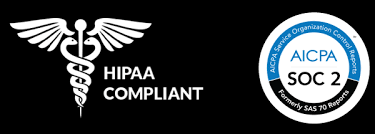Understanding Person-Centered Primary Care: How Captive Health Insurance Programs Can Improve Patient Outcomes Using Analytics

Captive insurance has grown rapidly as more employers look for ways to control healthcare costs while improving the health of the people they cover. But there’s a misconception that captives are only about financial strategy. In reality, some of the strongest results emerge when employers use the captive structure to support person-centered primary care, and power it with analytics.
A captive health insurance program gives employers more visibility into data, more flexibility in designing benefits, and more direct alignment between patient experience and plan performance. Combined with modern healthcare outcomes analytics, this model creates the ideal environment for better care and better long-term outcomes.
How Captive Health Insurance Programs Support Person-Centered Care
A health insurance captive allows employers to pool funds, share risk, and reinvest savings into the health of their population. Unlike traditional plans, captives can prioritize access, prevention, and whole-person care, the core pillars of person-centered primary care.
Employers can redirect savings into areas that matter most, such as extended primary care access, mental health support, chronic disease management, and preventive programs. When these patient-first initiatives are supported by analytics, they become easier to measure, refine, and scale.
In short, captives give organizations the freedom to design benefits around people, not just premiums.
The Role of Analytics in Improving Patient Outcomes
Modern healthcare outcomes analytics takes a wealth of disconnected information and turns it into a clear picture of how employees are doing, what they need, and where care can be improved. When captives combine financial control with patient outcomes analytics, they gain a deeper understanding of the health journey of their population.
Analytics helps employers uncover trends such as:
- Rising-risk members who need proactive support
- Gaps in primary care or chronic care management
- Preventable ER visits or hospitalizations
- Medication adherence issues
This isn’t just reporting, it’s insight. And insight leads to action.
Improving Patient Outcomes Through Data Analytics
Person-centered care depends on understanding the individual, not just the utilization pattern. That’s where improving patient outcomes through data analytics becomes powerful.
Captive programs can use analytics to:
- Strengthen care coordination between clinicians and employers
- Identify high-impact interventions before conditions worsen
- Support long-term primary care relationships
- Personalize wellness and chronic care initiatives
- Create accountability and visibility around population health
When analytics supports person-centered primary care, employers see improved engagement, better disease management, and fewer avoidable health events. Employees feel supported, seen, and understood, not just insured.
Why Captives and Analytics Work Well Together
Captives offer flexibility. Analytics offers clarity. Together, they create a strong foundation for sustained improvement in patient health.
Employers participating in a captive gain:
- Greater transparency into how care is used
- More control over benefit design
- Better alignment between care delivery and business goals
- Insight-driven decision-making powered by
healthcare analytics for employers
This is why many organizations view analytics as the engine that makes person-centered care within a captive not just possible, but highly effective.
Final Thoughts
Person-centered primary care is most effective when there is visibility, flexibility, and accountability, all of which captives naturally provide. When supported by powerful analytics, captive models can transform employer-sponsored healthcare by improving outcomes, elevating patient experience, and guiding smarter long-term decisions.
At Health Compiler, we help employers and advisors bring this vision to life. Our analytics platform makes it simple to track population health, measure outcomes, and understand where care and cost intersect. With clear, actionable insights, organizations can design benefits that put people first, and prove it with data.
Because when patient-centered care meets the right analytics, better outcomes follow.



